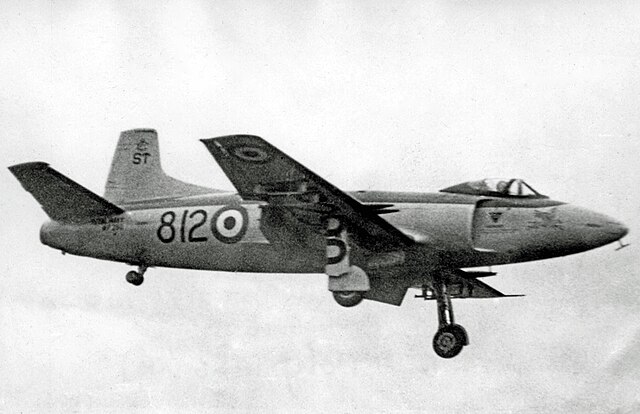767 Naval Air Squadron was a Naval Air Squadron of the Royal Navy's Fleet Air Arm. It was initially formed as a Deck Landing Training Squadron in 1939, when 811 Naval Air Squadron was renumbered 767 Naval Air Squadron, at HMS Merlin, RNAS Donibristle. A detachment went to Hyeres de la Palyvestre in the south of France, enabling training in fairer conditions. While here, the squadron took on an operational mission, with a bombing attack on the Italian port of Genoa. With the fall of France the squadron evacuated to Algeria, where it split. Part went to Malta, forming 830 Naval Air Squadron, the other part to HMS Ark Royal, with personnel returning to the UK via Gibraltar. The squadron regrouped at HMS Condor, RNAS Arbroath, and moved to the Deck Landing School at HMS Peewit at RNAS East Haven in 1943.
Phantom FG.1 of 767 Naval Air Squadron parked
Fairey Swordfish I 'W5856-4A', an example of the aircraft used by 767 NAS
Hawker Sea Fury FB.11, the type used by 767 NAS for DLCO training
Supermarine Attcker FB.2, WP290, ST812, in 1831 NAS markings landing at RNAS Stretton, the type used by 767 NAS at Stretton
RNAS Donibristle (HMS Merlin)
Royal Naval Air Station Donibristle or more simply RNAS Donibristle was a former Fleet Air Arm base located 2.7 miles (4.3 km) east of Rosyth, Fife, and 8.7 miles (14.0 km) northwest of Edinburgh. It was also known as HMS Merlin.
Unexploded bomb dropped over Edinburgh by Zeppelin airship on 2nd April 1916
Lieutenant Gilbert Stuart Martin Insall VC






